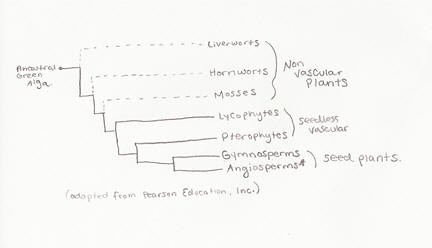Classification:
Domain: Eukarya
Kingdom: Plantae
Phylum: Magnoliophyta
Class: Liliopsida
Order: Asparagales
Family: Orchidaceae
Genus: Dracula
Species: Dracula vampira
Eukarya: The Dracula orchid is defined
as a eukaryote because it’s cells posses a true nucleus, and have
membrane bound organelles.
Plantae: The Dracula orchid is placed in
the kingdom plantae because it can photosynthesize, also because its
cells possess cellulose cell walls.
Magnoliophyta: The Dracula orchid fits
into the magnoliophyta because it is a flowering plant.
Liliopsida: The Dracula orchid belongs
in the class liliopsida because it is a monocot. This means that it
has one cotyledon. The leave venation of the monocots is typically
parallel, and the arrangement of vascular tissue in the stems is
scattered. In addition, the floral organs are typically in multiples
of three.
Asparagales: The Dracula orchid belongs
in the asparagales phylum because it has flowers at the top of its
stem, and clusters of leaves at the base.
Orchidacae: The Dracula
orchid fits into the family orchidaceae because it has three petals,
three sepals and a column.
Dracula: The Dracula orchid is a
part of the Dracula genus due to its bizarre, often times
sinister looking flowers. All of the organisms in the genus have
this trait in common.
Dracula vampira: large distinct
flowers that have rounded sepals where the tips are pulled into thin
‘tails’ characterize the species Dracula vampira. These tails can
extend to be 11 cm long. The translation of Dracula from
Latin to English is “little dragon”. This refers to the two long
sepals on the flower.
P
Orchids are angiosperms, shown here, they are most closely
related to gymnosperms.


Click here to continue onto
Habitat!
To learn more about another interesting angiosperm, check out
Sage!
Home